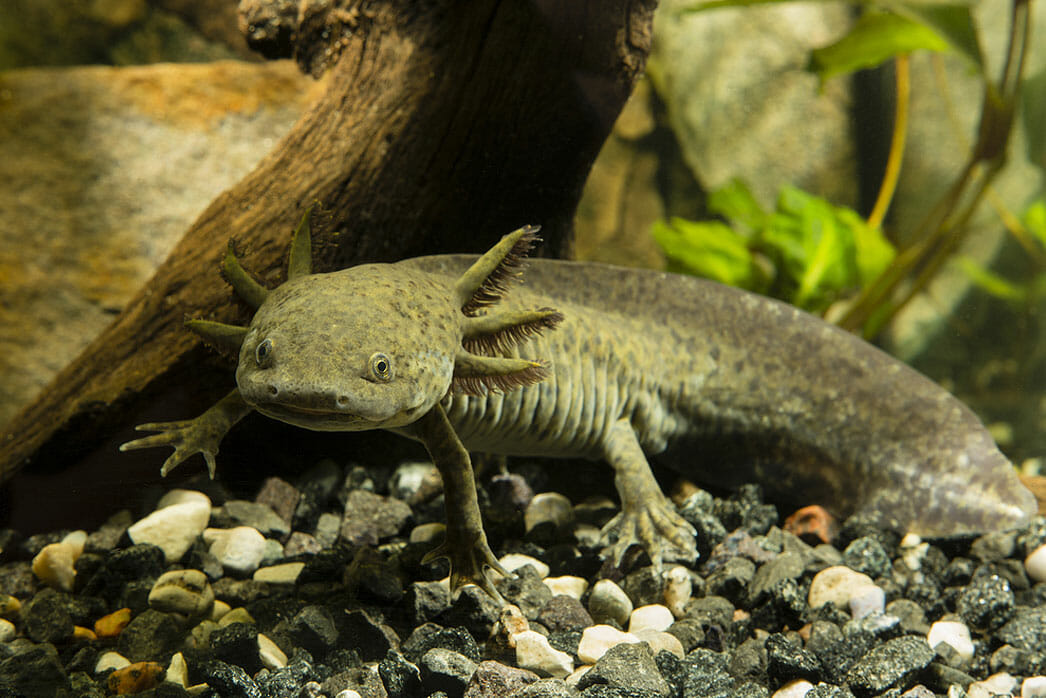Axolotl
Ambystoma mexicanum
At the Detroit Zoo
The axolotl is a freshwater salamander that spends its entire life underwater. This highly intelligent amphibian’s behavior can range among individuals from social to solitary and active to dormant. It can be seen at the award-winning National Amphibian Conservation Center – a leader in amphibian conservation and research – which houses a spectacular diversity of frogs, toads, salamanders, newts and caecilians.
Description
Axolotls have long tails, external gills, four legs and large, flat heads. Like their personalities, the color of axolotls depends on the individual. The most common colors are gold, albino and dark – ranging from black, brown or gray, accompanied by small spots all over their bodies. The axolotls skip the metamorphosis stage during their growth process and maintain their larval features – external gills and tadpole-like dorsal fins. This phenomenon is called neoteny. Due to habitat destruction and invasive species, there are less than 100 axolotls left in the wild.
Fun Facts
-
In the wild, this species of freshwater salamander can only be found in Lake Xochimilco, Mexico City’s primary water source.
-
The axolotls can regenerate almost any lost body part faster than any other species. In fact, they are used in research to apply this ability to human nerve cells and organs.
-
The Aztecs saw axolotls as the earthly servant of the dog-headed god, Xolotl.
-
Although axolotls are primarily active at night, the behavior of these amphibians is so unpredictable that they cannot be classified as nocturnal.
-
Even though the exact number of axolotls in the wild remains unknown, the species has been thought to have gone extinct a number of times, only to be found again on surveys – maintaining the species’ Critically Endangered status.
-
Staff at the National Amphibian Conservation Center have trained our axolotls to come out of hiding so we can easily provide welfare checks on them.






